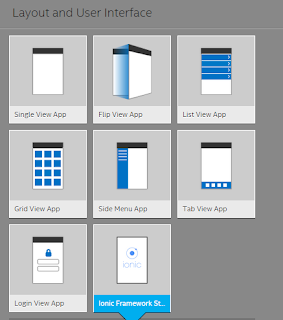UWP: XAML's ListView Control and its SelectionChanged event - Part 1
In my previous post you learnt about ListView and ListBox controls used in XAML.
In this post you will learn to:
Part 1
Part 2
JlistView_0.png
Here you choose the target and min versions of Windows 10
JlistView_5.png
Choose to place a DataTemplate.
You add a border to the grid. Add a TextBlock to the Grid.
JlistView_12.png
Add 3 ListViewItems as shown. Provide names for the ListViewItems. FontSize is optional. You immediately see the ListViewItems in the design as shown.
You have successfully added three ListViewItems to the project.
In this post you will learn to:
Part 1
- Progressively build a ListView Control
- Place ListViewItems inside a ListView's ItemTemplate
- You will place three named ListView items
Part 2
- You will write code to change the properties of items you placed.
JlistView_0.png
Here you choose the target and min versions of Windows 10
JlistView_1.png
Add a ListView as shown between the 'Grid' as shown using intellisense.
JlistView_2.png
An empty ListView control is added to the XAML with some default border over the Desktop as shown.
JlistView_3.png
Now we place an ItemTemplate of the ListView by choosing from a drop-down list.
JlistView_4.png
Visual Studio is not happy as this template cannot be empty. We will add a DataTemplate inside the ItemTemplate, again using intellisense.
JlistView_5.png
Choose to place a DataTemplate.
JlistView_6.png
DataTemplate is placed and there is no red wiggly line for ItemTemplate like before.
JlistView_7.png
Now we place a Grid, layout element, again using intellisense.
JlistView_8.png
You could choose the background property (not really needed, optional).
JlistView_9.png
I just changed the width of ListView to half its previous size. Notice the UI change in Design view.
JlistView_10.png
You add a border to the grid. Add a TextBlock to the Grid.
JlistView_11.png
You now add ListView.Items by typing it just above the closing of 'ListView' as shown.
Add 3 ListViewItems as shown. Provide names for the ListViewItems. FontSize is optional. You immediately see the ListViewItems in the design as shown.
JlistView_13.png
Now if you build, deploy and run it on the Local Machine (as described in my earlier posts), the App is displayed as shown. You can also see the borders of the ListView's TextBlock
JlistView_14.png
You have successfully added three ListViewItems to the project.


















Comments